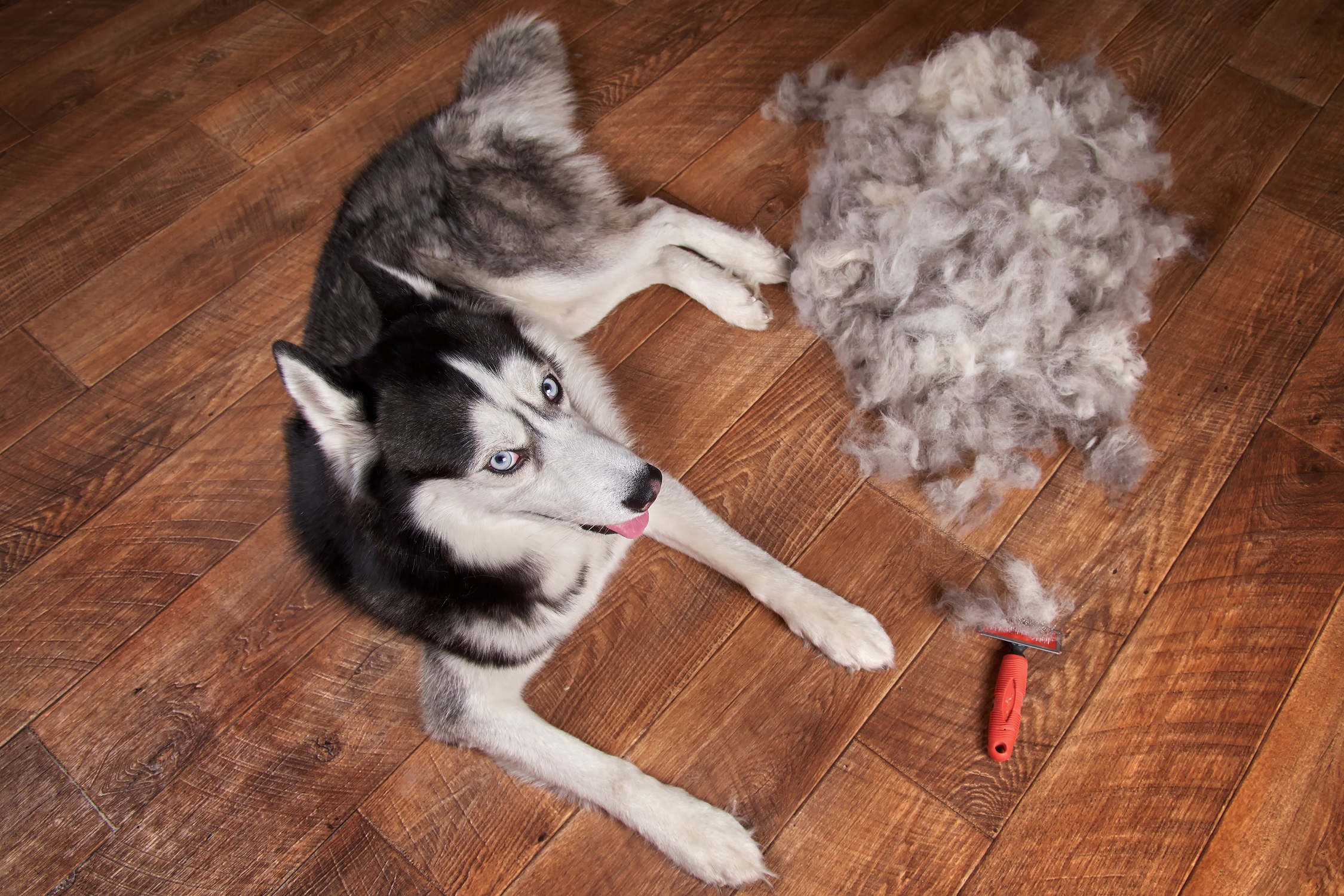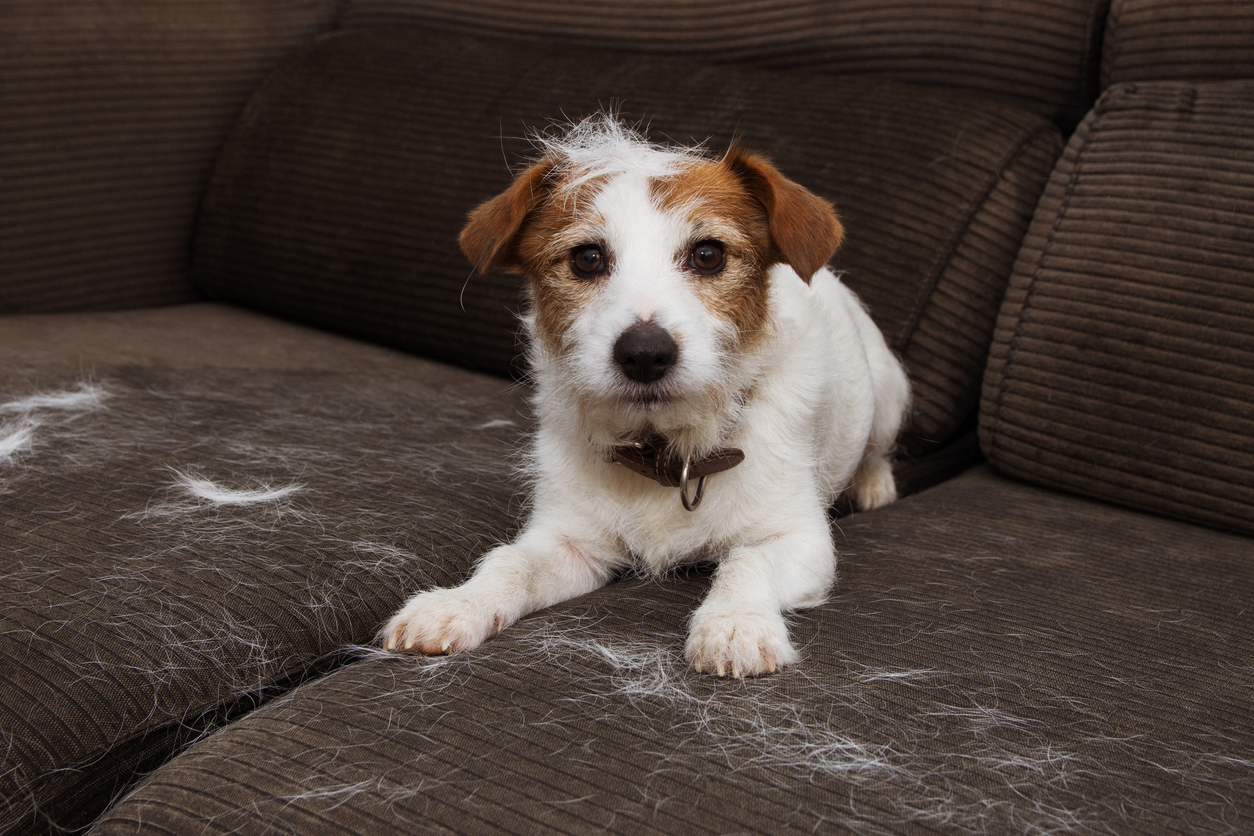Shedding is a natural and normal process for dogs, but excessive shedding can become a source of frustration for pet owners. The constant presence of dog hair on furniture, clothing, and floors can be overwhelming, especially for those with allergies or who prefer a tidy living environment. Fortunately, there are several strategies and practices that can help reduce shedding in dogs and minimize the impact it has on our homes. In this article, we will explore various methods to keep shedding under control, from proper grooming routines to dietary considerations and environmental adjustments.
Regular Brushing
 One of the most effective ways to reduce shedding in dogs is through regular brushing. Different breeds have different coat types, so it is essential to choose the appropriate brush or comb that suits your dog’s specific needs. For example, dogs with long, thick coats may benefit from a slicker brush, while those with short coats might require a bristle brush. Daily brushing helps remove loose hair and prevents it from accumulating around the house. Additionally, it stimulates the production of natural oils in the skin, which can contribute to a healthier coat and reduced shedding.
One of the most effective ways to reduce shedding in dogs is through regular brushing. Different breeds have different coat types, so it is essential to choose the appropriate brush or comb that suits your dog’s specific needs. For example, dogs with long, thick coats may benefit from a slicker brush, while those with short coats might require a bristle brush. Daily brushing helps remove loose hair and prevents it from accumulating around the house. Additionally, it stimulates the production of natural oils in the skin, which can contribute to a healthier coat and reduced shedding.
Bathing and Conditioning
Regular bathing and conditioning can significantly reduce shedding by keeping the skin and coat clean and moisturized. Use a mild, dog-specific shampoo and conditioner that won’t strip away the natural oils. Be sure to rinse thoroughly to remove any residue that may irritate the skin. Bathing frequency will depend on your dog’s breed and activity level, but generally, once every four to six weeks is sufficient. Avoid excessive bathing, as it can dry out the skin and lead to increased shedding.
Healthy Diet and Supplements
Proper nutrition plays a vital role in a dog’s overall health, including the condition of their coat. Ensure that your dog’s diet is well-balanced and provides essential nutrients, such as omega-3 fatty acids, which promote healthy skin and coat. Consult with your veterinarian to determine the best diet and any necessary supplements for your dog’s specific needs. Omega-3 supplements, like fish oil, can help reduce shedding and improve the overall quality of the coat.
Environmental Considerations
 Creating a conducive environment for your dog can also contribute to reduced shedding. Maintain a clean living space by regularly vacuuming or sweeping floors and furniture. Consider using washable or easily removable covers for upholstery to minimize hair accumulation. Provide your dog with designated resting areas, such as dog beds or blankets, which are easier to clean and contain shedding. Additionally, controlling the humidity levels in your home can help prevent excessive drying of the skin, which can lead to increased shedding. Use a humidifier in dry climates or during winter months to maintain optimal humidity levels.
Creating a conducive environment for your dog can also contribute to reduced shedding. Maintain a clean living space by regularly vacuuming or sweeping floors and furniture. Consider using washable or easily removable covers for upholstery to minimize hair accumulation. Provide your dog with designated resting areas, such as dog beds or blankets, which are easier to clean and contain shedding. Additionally, controlling the humidity levels in your home can help prevent excessive drying of the skin, which can lead to increased shedding. Use a humidifier in dry climates or during winter months to maintain optimal humidity levels.
Professional Grooming
Regular visits to a professional groomer can be beneficial for controlling shedding. Groomers are experienced in proper techniques for removing loose hair, reducing matting, and maintaining coat health. They can provide additional services, such as de-shedding treatments or specialized grooming tools, to minimize shedding. Depending on your dog’s breed and coat type, a groomer may recommend scheduling appointments every four to eight weeks.
Conclusion
While shedding is a natural process for dogs, implementing these strategies can help minimize its impact on your home and maintain a cleaner living environment. Remember to establish a regular grooming routine, provide a balanced diet, and make necessary environmental adjustments. By taking proactive measures to reduce shedding, you can ensure the comfort and well-being of both you and your furry companion while enjoying a hair-free home.
Disclaimer: It’s important to consult with a veterinarian or professional groomer for personalized advice on reducing shedding based on your dog’s specific breed, coat type, and individual needs.
